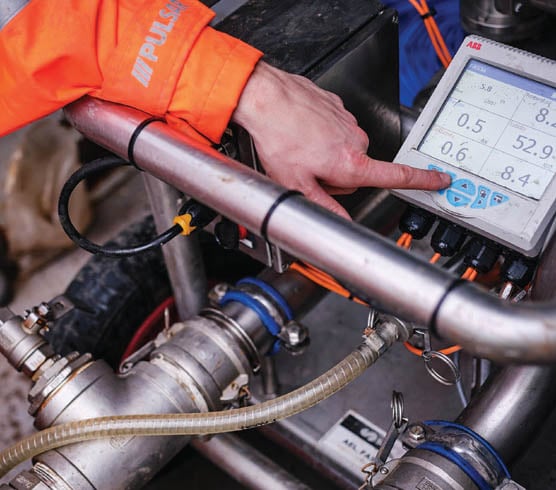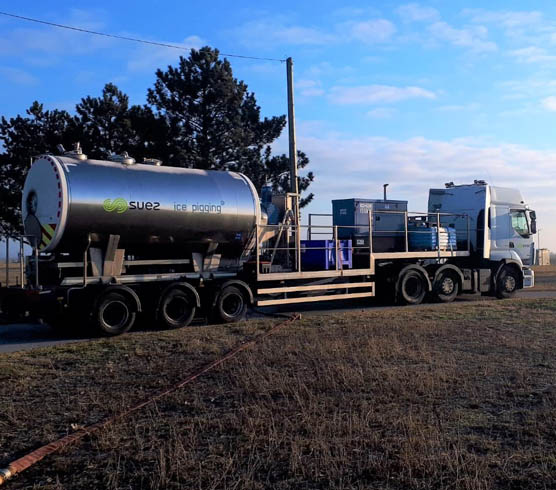The issue
OMV Austria had recently installed a new water treatment plant at Gänserndorf to treat brine produced from the oilfield before its re-injection into the Prottes Ringschluss network.
Despite the excellent water quality produced at the plant, the historical build-up of iron sulphide in the distribution pipes was causing significant pressure losses across the network and water quality issues at a nearby polymer plant.


Ice Pigging™ proved to be very effective at removing iron sulphide from brine injection networks and it was much easier to apply to the network than conventional foam pigs. We are very pleased with the improvements in flow on the small diameter injection pipes and the pressure increase overall.Alexander Weilhartner , Advisor Production, Oil – OMV Austria
The solution
Traditional pigging would have required costly enabling works, as well as network downtime during the pigging process, so OMV approached SUEZ to discuss applying its Ice PiggingTM technology. This was one of the first field applications in the oil and gas sector.
The 8,500m network mainly consisted of a DN250 and DN200 ring main and smaller branch pipes feeding individual injection wells. The pipework was broken into seven separate sections for Ice Pigging™, ranging from 800m to 1,750m in length. In most areas, the ice slurry could be inserted and removed by adapting existing network fittings, so very few enabling works were required.
SUEZ manufactured all ice locally, using our mobile ice generation system, which was set up at the Gänserndorf treatment plant. The standard network operating temperatures are 35C, so OMV arranged for tankers of cool water to be inserted before the ice to reduce melting during the operation.
The results
Due to the close communication and planning between SUEZ and OMV, the operations smoothly. The most extended process took just 3.5 hours, and many took less than two, after which the injection network was immediately returned to service.
Effluent samples analysed by OMV show that significant quantities of iron sulphide and bacterial growth were removed from the pipework; in some cases, more than 500kg from sections with an average length of 1000m. The removal of this material resulted in hydraulic improvements in the network, including a 0.5 bar increase at the end of the network.
There was also a pronounced improvement in the flows observed on the small diameter pipes feeding the injection wells, with some seeing increases of 30% after Ice Pigging™.

Case study - Successful use of Ice Pigging™ in the Oil and Gas Sector


